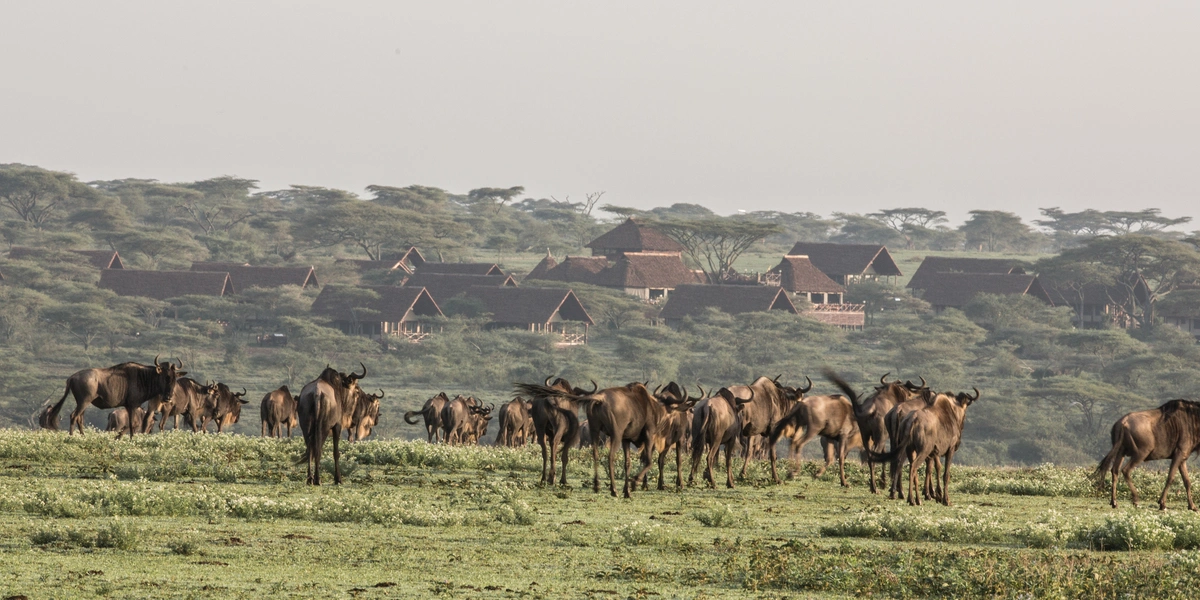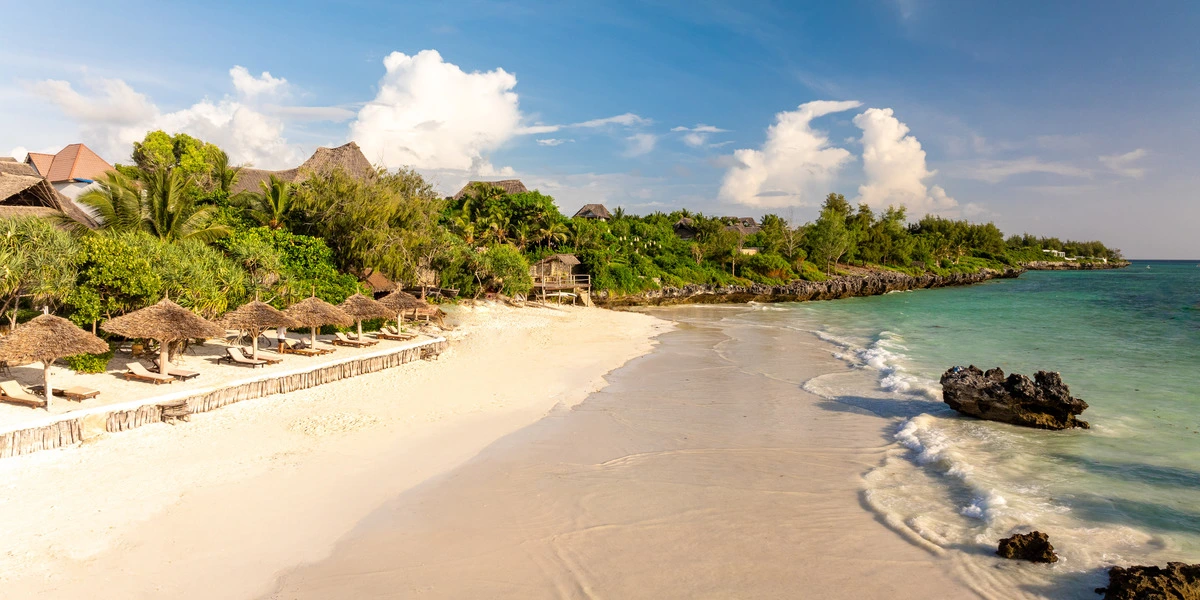Find when to travel in Tanzania and choose the best time for safari in Tanzania for diverse animals, stunning landscapes, amazing experiences, and the famous wildebeest migration during the dry season, which runs from late June to October. This time of year is known for its beautiful sky, plentiful animals, and the spectacular sight of millions of wildebeest crossing the Serengeti Plain.
The best time to visit Zanzibar is also during the dry season, and anyone wishing to climb Mount Kilimanjaro should aim for the same months for the most excellent conditions.
Budget visitors can find deals during low seasons, but peak months provide the most memorable experiences. Plan your vacation correctly to take advantage of Tanzania’s several offers! Tanzania is an ideal place for both nature lovers and adventure enthusiasts.
Discover the Tanzania travel best months to visit each destination
Picture this: You’re standing on the vast Serengeti plains, the golden grass swaying in the breeze, as a herd of wildebeest thunders past. Or maybe you’re imagining yourself lounging on Zanzibar’s pristine beaches, the turquoise waters lapping at your feet.
Tanzania is a dream destination, but timing your visit right can make all the difference. Let’s dive into the best times to experience this East African gem.
January in Tanzania is warm and dry, with temperatures ranging from 25°C to 30°C (77°F to 86°F). This makes it a great season for safaris since animals congregate around water sources, making them simpler to find.
The sunny sky and mild circumstances are ideal for hiking Mount Kilimanjaro or relaxing on Zanzibar’s stunning beaches.
In February, Tanzania has warm, dry weather with temperatures ranging from 25°C to 30°C (77°F to 86°F). This is an excellent season for safaris since animals are easier to locate in dry weather.
The sunny sky and comfortable temperatures also make it ideal for climbing or resting on Zanzibar’s magnificent beaches, providing ideal circumstances for outdoor excursions.
In March, Tanzania begins its long rainy season, with temperatures ranging from 25°C to 30°C (77°F to 86°F). While rainfall is common, it generally occurs in brief, strong spurts, especially in coastal and northern areas. Safaris can still be pleasant, but expect fewer visitors and more difficult terrain.
The lush landscapes are stunning, making it ideal for birding and picturesque vistas.
Tanzania’s high rainy season is in April and May, with heavy, regular rainfall and temperatures ranging from 25°C to 30°C (77°F to 86°F). Rains may make travel challenging, especially for safaris, because some routes may be impossible to use.
However, this time of year provides beautiful scenery, fewer people, and reduced rates. It’s also ideal for birding and admiring the country’s lush vegetation.
Tanzania’s dry season begins in June, with comfortable temperatures ranging from 20°C to 25°C (68°F to 77°F). Clear skies and cooler temperatures provide for ideal safari conditions, particularly in national parks such as the Serengeti and Ngorongoro.
It’s also a great season to hike Mount Kilimanjaro or relax on Zanzibar’s beaches since the weather is bright and pleasant for outdoor activities.
In July, Tanzania has dry, cold weather with temperatures ranging from 20°C to 25°C (68°F to 77°F). The sunny skies and cool temperatures make it perfect for safaris, especially in the Serengeti, where the Great Migration is now ongoing.
It’s also an excellent season to hike Mount Kilimanjaro or relax on Zanzibar’s golden beaches since the weather is ideal for outdoor sports.
In August, Tanzania experiences dry, cool weather with temperatures ranging from 68°F to 77°F (20°C to 25°C). This month is perfect for safaris as wildlife is easily visible in the dry conditions, especially in the Serengeti during the Great Migration.
The stunning skies and mild temperatures create an ideal setting for climbing Mount Kilimanjaro or relaxing on Zanzibar’s sunny beaches.
In September, Tanzania has dry, warm weather with temperatures ranging from 20°C to 30°C (68°F to 86°F). This is a fantastic season for safaris since wildlife is numerous and easily spotted, especially in the Serengeti, Ngorongoro, Tarangire, and other parks.
The sunny skies and temperate temperatures are ideal for hiking Mount Kilimanjaro or enjoying Zanzibar’s beaches and outdoor sports.
In October, Tanzania has warm, dry weather with temperatures ranging from 25°C to 30°C. This is an excellent season for safaris since the dry weather makes animals easier to observe in all Tanzania parks and reserves.
The bright sky and comfortable temperatures are ideal for hiking Mount Kilimanjaro or relaxing on Zanzibar’s sandy beaches, providing ideal weather for outdoor activities.
Tanzania enters its short rainfall season in November, with light precipitation and temperatures ranging from 25°C to 30°C (77°F to 86°F). While the rains are typically short, they leave the countryside lush and real.
Safaris are less popular at this period, as there are fewer tourists. The warm weather is also ideal for hiking Mount Kilimanjaro or visiting Zanzibar’s beaches.
In December, Tanzania has pleasant dry weather with temperatures ranging from 25°C to 30°C (77°F to 86°F). This marks the beginning of the short dry season, making it an ideal time for safaris, especially in the Serengeti.
Clear skies and temperate temperatures provide great conditions for hiking Mount Kilimanjaro or relaxing on Zanzibar’s beaches.
Tanzania has unique climate seasons that impact animal viewing and visitor experiences. The dry season, which runs from late June to October, provides good circumstances for animal watching. During this time, the vegetation is small, making it easier to see different species.
When to travel to Tanzania in the wet season, which runs from November to May, provides more rain, lush landscapes, and a diverse set of animal activities. While the northern destinational parks are open all year, some places may suffer additional seasonal variations.

The best time for safari in Tanzania is in the dry months, which run from June to October. From November until early March, you will see the newborns in a brief rainstorm. The weather becomes adventurous during April and May, when there is heavy rain.

The best months for mountain climbing in Tanzania are January through March and June through October. These dry seasons provide clearer skies and more suitable weather conditions for trekking, resulting in a safer and more enjoyable ascent.

The best time to visit Zanzibar is during the dry season, from June to October or December to February. When to travel in Tanzania during these months provides pleasant, sunny weather, ideal for beach activities such as swimming, snorkeling, and relaxation.
Consult with J.M. Tours, your Tanzania specialist, to begin planning your bespoke holiday experience. Here we help you choose the best Tanzania travel months for your vacation.
November to March
There are occasional short, heavy showers, but they don’t typically last long.
April to May
In the season of heavy and frequent rains, make the landscapes beautiful and green.
November to March:
Warm and dry, making wildlife easier to spot since animals gather around water sources.
Lao Tzu
Planning a trip to Tanzania? Our team is always here to help.